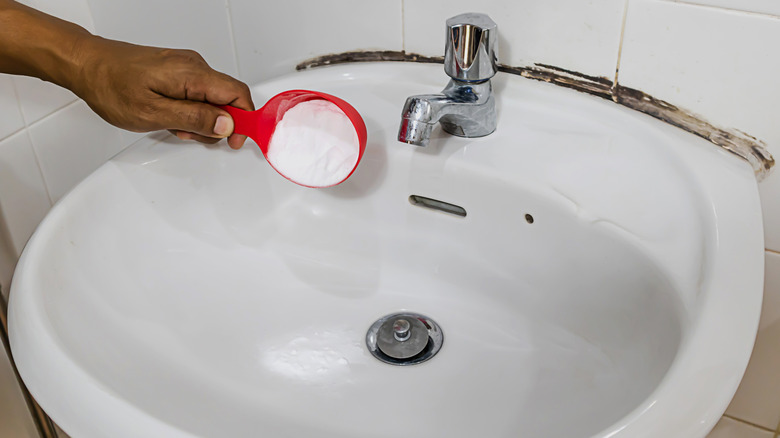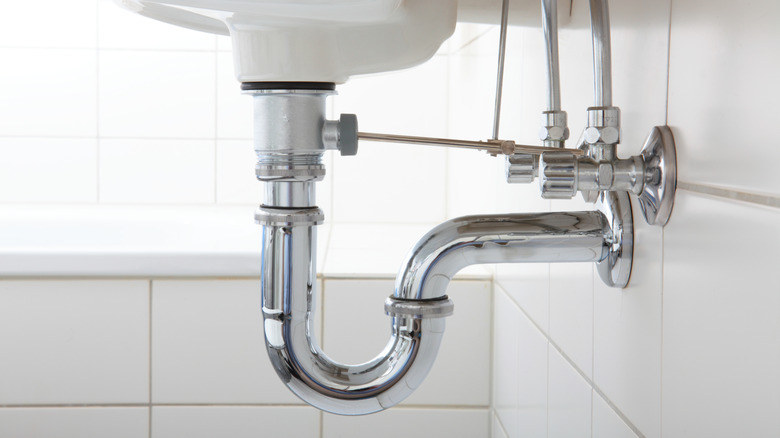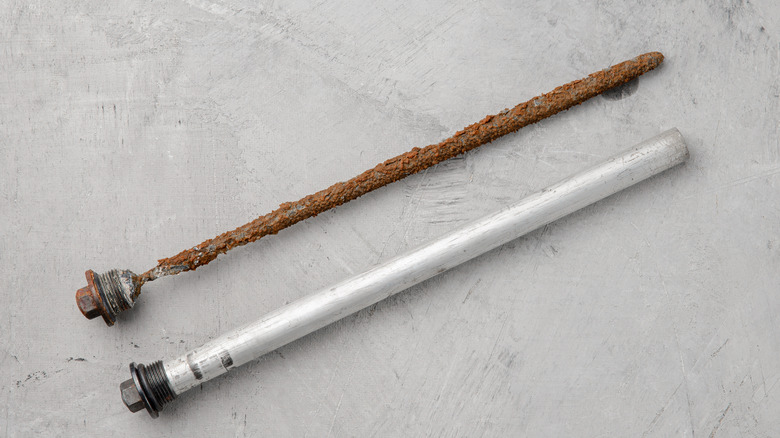What It Means When Your Bathroom Sink's Water Stinks (And How To Fix It)
There are two odors you definitely do not want to smell in your home — rotten eggs or a sewer stench. If you have noticed either of these foul odors wafting up from your bathroom sink, or from the water itself, there are a few tricks you may want to try before reaching out to a professional for help.
An unpleasant smell from your sink could mean a variety of things. It could be an indication that you have a build-up of bacteria growing in your drains. Or perhaps the smell is coming from the guest bathroom that doesn't get used as often, which could mean you have a dry P-trap or U-bend. You could also be dealing with a corroded anode rod in your water heater. While bacteria build-up and a dry P-trap can usually be fixed DIY-style, you will most likely need the help of a professional to replace your anode rod.
How to get rid of bacteria build-up in your bathroom sink
One of the most common culprits of a foul-smelling bathroom sink is buildup from a myriad of different products such as soap scum, fallen hair, and even some food particles. If it starts to emit that familiar rotten egg scent, it usually means that bacteria is flourishing in your drain.
To combat the odor, the first thing you should try is using a drain snake to pull out any grime or debris. If you do not have a drain snake, or do not want to get your hands dirty, you could try pouring boiling water down the drain. You can also use this baking soda and vinegar concoction that will help reduce the sink's odors. To make the mixture, pour about a fourth of a cup of baking soda into the sink, followed by about one cup of vinegar. Let it sit for at least 20 minutes before washing it down with hot water.
How to fix a dry P-trap or U-bend
Another possible reason your bathroom sink has started to smell is a dry P-trap. This is the U-shaped pipe directly underneath your sink. It works to block sewer gases and smells. (It gets its name thanks to the side-view "P" shape when connected to your sink.) This pipe is designed to hold a small amount of water, which creates a water seal. This seal not only protects your sink from sewer gases, but it also helps to collect debris from escaping to the rest of your plumbing system. If your bathroom sink's P-trap is dry from a long period of non-use, you can try pouring water directly down the sink drain. If the smell still persists, your P-trap may need to be replaced. You will likely need to contact a professional in this case.
How to fix a corroded anode rod in your water heater
If you still notice a strong stench of rotten eggs or sulfur wafting up from your bathroom sink, chances are you might have a broken-down sacrificial anode rod in your water heater. This anode rod, which is typically made of magnesium, aluminum, or zinc, runs down the center of your tank and works to protect it from corrosion. Because its primary task is to corrode, these rods typically last two to four years; however, sometimes they can cause issues in terms of odors. Reacting to sulfites in the water, corroded magnesium and aluminum anode rods create hydrogen sulfide gas, which is the culprit behind that sulfur smell.
If you have an understanding of basic plumbing, you can replace the anode rod in your water heater. However, if you do not, you should probably call a professional. They will most likely replace your anode rod with one made of aluminum-zinc alloy or zinc to reduce the reoccurrence of foul-smelling drains or water.



